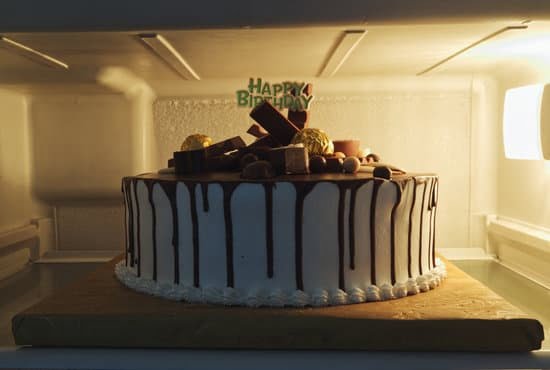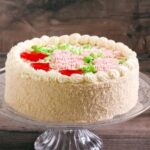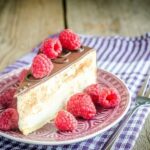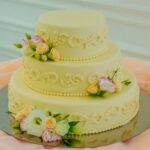Cake decoration is an essential aspect of creating a beautiful and delicious cake. It not only adds visual appeal but also enhances the overall taste and experience of enjoying a slice. In this article, we will delve into the art of cake decoration, exploring its significance, essential tools and supplies, techniques for choosing the right cake, basic and advanced decorating methods, as well as tips, tricks, trends, and DIY ideas for achieving stunning cake decorations.
Whether you are a seasoned baker or a beginner in the world of cake decorating, having the right tools and supplies is crucial. From piping bags to spatulas and tips, each item plays a significant role in bringing your creative visions to life.
But before we get into the nitty-gritty of tools and supplies, it’s important to understand how choosing the right cake can greatly impact your decoration process. The flavor and texture of the cake can influence which techniques will work best and how well your decorations will hold up.
In the subsequent sections of this article, we’ll discuss basic decorating techniques such as icing a cake and piping borders, as well as more advanced methods including fondant work and intricate piping designs. Additionally, we’ll provide valuable tips for achieving professional-looking cake decorations like achieving smooth icing and preventing air bubbles.
Lastly, we’ll explore the latest trends in cake decoration and offer creative DIY ideas for those looking to decorate their cakes at home on a budget. Whether you’re looking to improve your skills or simply gain inspiration for your next baking project, this comprehensive guide to cake decoration has got you covered.
Essential Tools and Supplies
When it comes to cake decoration, having the right tools and supplies is essential for creating beautiful and professional-looking cakes. Whether you’re a beginner or an experienced baker, having the right equipment can make all the difference in your cake decorating endeavors. Here is a comprehensive list of the must-have tools and supplies for cake decoration.
Piping Bags and Tips
Piping bags and tips are essential for creating intricate designs and decorations on cakes. There are various types of piping bags available, including disposable plastic bags and reusable cloth bags. Additionally, there is a wide array of piping tips to choose from, each offering a different design for icing and decorating cakes.
Spatulas
Spatulas are indispensable for smoothing icing onto cakes, filling layers, and creating clean edges. Offset spatulas are particularly useful for achieving smooth finishes and precise details on cakes.
Fondant Tools
For those who want to explore fondant work, investing in fondant tools such as rolling pins, cutting wheels, silicone mats, and shaping tools is crucial. These tools will help mold and shape fondant into various designs and decorations for cakes.
Turntable
A turntable is a valuable tool for cake decorators as it allows for easy access to all sides of the cake while decorating. It also helps in achieving smooth finishes and even designs on the surface of the cake.
Having these essential tools and supplies on hand will not only make your cake decorating process more efficient but will also open up a world of creative possibilities when it comes to cake decoration.
Now that we’ve covered the importance of having the right tools for cake decoration let’s move on to discussing how to choose the perfect cake as a canvas for your creative cake decoration endeavors.
Choosing the Right Cake
When it comes to cake decoration, choosing the right cake is crucial in ensuring that your creation not only looks beautiful but also tastes delicious. Different decorating techniques work best with specific cake flavors and textures, so it’s important to consider these factors when selecting a cake for decoration. Here are some tips for selecting the perfect cake for decoration:
- Consider the flavor: Certain flavors lend themselves well to specific decorating techniques. For example, a light and fluffy vanilla or chiffon cake is ideal for delicate designs and intricate piping work. On the other hand, a rich and moist chocolate cake provides a sturdy base for fondant work and sculpted decorations.
- Think about the texture: The texture of the cake also plays a role in its suitability for decoration. A dense and firm cake, such as a pound cake or carrot cake, can support heavier decorations and stacked layers without collapsing. Conversely, a tender and crumbly cake may be more challenging to work with when it comes to intricate designs.
- Consider the size: The size and shape of the cake will also impact your decorating choices. A larger, multi-tiered cake provides more surface area for elaborate designs and decorations, while a smaller single-layer cake may be better suited for simple yet elegant adornments.
By taking these factors into consideration, you can ensure that you select the perfect cake for your desired decorating technique. Whether you’re aiming for a sleek and sophisticated look or an intricately designed masterpiece, choosing the right cake is the first step towards achieving stunning results in your cake decoration endeavors.
Basic Decorating Techniques
When it comes to cake decoration, mastering basic techniques is essential for creating an aesthetically pleasing and delicious cake. One of the foundational skills in cake decorating is icing a cake. This involves spreading a layer of frosting evenly over the entire surface of the cake.
It’s important to start with a crumb coat to seal in any loose crumbs, followed by a final coat of frosting for a smooth and polished look. Using an offset spatula can help achieve an even layer of icing.
Piping borders is another fundamental skill in cake decoration, as it helps to frame the design and give the cake a finished look. There are various types of tips that can be used for piping borders, each creating a different effect such as scalloped edges or rope-like textures. With practice and steady hand movements, decorators can achieve clean and precise borders that add visual appeal to the cake.
Creating simple designs with frosting or icing can add personality and charm to a cake. This can include writing messages or names on cakes, adding swirls or rosettes, or using stencils to create patterns. By practicing these basic decorating techniques, aspiring bakers and decorators can build a strong foundation for more advanced designs and styles in the future.
Advanced Decorating Techniques
Advanced cake decoration techniques take your baking skills to the next level, allowing you to create breathtaking and intricate designs that will impress your friends and family. In this section, we will explore some of the more advanced cake decorating techniques, including fondant work, sugar flowers, and intricate piping designs. These techniques require a bit more time and practice to master but can result in stunning and professional-looking cakes.
Working With Fondant
Fondant is a versatile and popular choice for cake decoration due to its smooth finish and ability to be molded into various shapes and designs. To work with fondant, you will need a few essential tools such as a rolling pin, fondant smoother, and cornstarch for dusting. Techniques for using fondant include covering an entire cake with a layer of fondant, creating 3D figures or shapes, and using molds for intricate designs.
Creating Sugar Flowers
Sugar flowers are a beautiful and delicate addition to any cake. While they may look complicated to make, with practice and patience, you can master the art of creating lifelike sugar flowers. Tools such as flower cutters, petal dusts, wire stems, and flower formers are essential for making sugar flowers. There are various techniques for creating different types of flowers such as roses, peonies, orchids, and more.
Intricate Piping Designs
Piping intricate designs on cakes requires steady hands and precision but can result in stunning decorative elements. Techniques for intricate piping designs include using different types of piping tips such as round tips for dots or beads, star tips for rosettes or stars, leaf tips for leaves or petals, and specialty tips for lace or basketweave patterns. Practice is key when it comes to mastering piping techniques.
As you delve into these advanced decorating techniques, remember that patience is crucial when learning new skills. With practice and dedication, you can elevate your cake decoration game to new heights and create show-stopping confections that will leave a lasting impression on all who see them.
Tips and Tricks for Perfect Decoration
Achieving the perfect cake decoration requires attention to detail and some insider tips and tricks. One of the most important aspects of cake decoration is achieving smooth icing.
To achieve this, it’s crucial to start with a crumb coat to seal in any loose crumbs, then apply a thicker layer of icing for a smooth and polished finish. Using a bench scraper or offset spatula will help create an even surface, and chilling the cake between layers can also help in achieving that flawless look.
Preventing air bubbles in icing is another common challenge when it comes to cake decoration. To avoid this, it’s important to mix the icing at a low speed to minimize the amount of air being incorporated. Additionally, gently tapping the filled piping bag on the countertop can help release any trapped air before decorating.
Mistakes are inevitable in cake decoration, but knowing how to fix them can save the day. If you make a mistake while piping or creating designs, use a small spatula or toothpick to carefully remove or adjust any misplaced decorations. In cases where the mistake is more significant, having extra icing on hand will allow you to cover up any errors seamlessly.
By implementing these pro tips for achieving professional-looking cake decorations, including how to achieve smooth icing, preventing air bubbles, and fixing mistakes, you can elevate your cake decoration skills and create stunning confections that are sure to impress.
Cake Decoration Trends
One of the current trends in cake decoration is the use of natural elements and botanical motifs. This includes incorporating floral designs, edible flowers, and greenery-inspired decorations onto cakes. From rustic wedding cakes to elegant birthday designs, botanical-themed cake decoration adds a refreshing and organic touch to baked goods.
Another popular trend in cake decoration is the use of metallic accents. Gold, silver, and rose gold elements are being used to add a touch of glamour and sophistication to cakes. Whether it’s metallic sprinkles, edible glitter, or foil-wrapped chocolates, these shiny details can elevate the overall look of a cake and make it a show-stopping centerpiece at any event.
In addition to these specific design elements, certain color palettes also come in and out of vogue when it comes to cake decoration. Pastel hues are currently having a moment in cake decorating, with soft pinks, blues, lavenders, and greens being popular choices for creating dreamy and ethereal designs. These colors are often used in combination with other trending elements such as florals or metallics to create visually stunning cakes that are both beautiful and delicious.
Staying informed about these cake decoration trends can help you take your baking skills to the next level and impress your friends and family with stylish and contemporary creations. By paying attention to popular themes, colors, and design elements within the world of cake decoration, you can ensure that your cakes remain on-trend while also reflecting your own unique style as a baker.
DIY Cake Decoration Ideas
In conclusion, cake decoration is truly an art form that allows bakers to showcase their creativity and imagination. Whether you are a beginner or a seasoned pro, there are countless tools, supplies, and techniques to explore and master. From basic decorating techniques such as icing a cake and piping borders to more advanced skills like fondant work and intricate piping designs, the possibilities for cake decoration are endless.
Furthermore, staying updated on the latest trends in cake decoration can help inspire your next baking project. Whether it’s popular themes, color schemes, or design elements, incorporating current trends into your cake decoration can make your creations stand out.
Lastly, embracing do-it-yourself (DIY) cake decoration ideas not only allows for creative expression but also provides budget-friendly options for decorating cakes at home. By using everyday kitchen items and easy-to-find decorations, you can add a personal touch to your cakes without breaking the bank.
So whether you’re celebrating a special occasion or simply want to indulge in some delicious treats, take the time to experiment with different cake decoration techniques and unleash your inner artist. Happy decorating.
Frequently Asked Questions
What Is the Decoration on Cake Called?
The decoration on a cake is commonly referred to as “icing” or “frosting.” This can be made from various ingredients such as butter, sugar, and flavorings, and can be applied in different ways to create decorative designs.
What Can I Use to Decorate a Cake?
There are numerous options for decorating a cake, including icing/frosting (buttercream, royal icing), fondant, edible flowers, fresh fruit, chocolate shavings, sprinkles, and piping gel. These can be used individually or combined to create unique and visually appealing decorations on a cake.
What Are the 5 Kinds of Cake Decorating?
The five main types of cake decorating techniques are frosting (using buttercream or royal icing), using fondant to cover the cake and create detailed designs, piping techniques using various tips and tubes to create patterns and textural elements, gum paste or sugar paste decorations that are shaped by hand or with molds, and the use of edible embellishments like fresh fruit or flowers for a natural touch.
Each type offers its own set of creative possibilities for decorating cakes.

Welcome to our cake decorating blog! My name is Destiny Flores, and I am the proud owner of a cake decorating business named Cake Karma. Our mission is to provide delicious, beautiful cakes for all occasions. We specialize in creating custom cakes that are tailored specifically to each customer’s individual needs and tastes.





